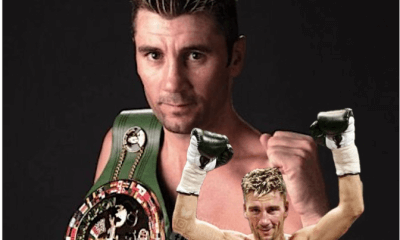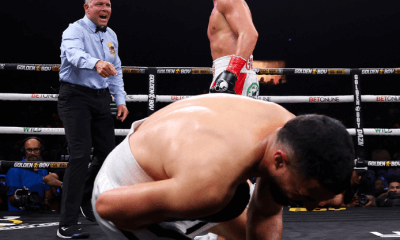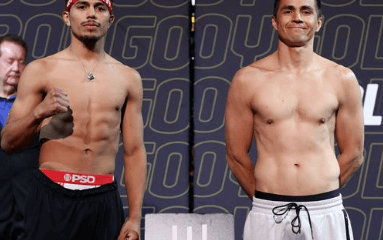Featured Articles
The Hauser Report: “The Greatest Show on Earth” Comes to Warren, Ohio
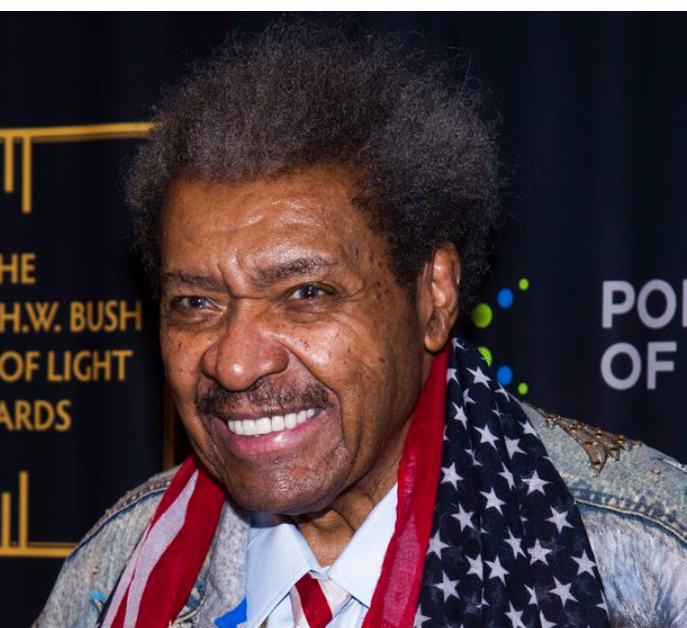
The Hauser Report: “The Greatest Show on Earth” Comes to Warren, Ohio
On January 29, Don King promoted a six-bout card headlined by Trevor Bryan defending his faux “regular WBA world heavyweight championship” against Jonathan Guidry coupled with Ilunga Makabu defending his WBC world cruiserweight title against Thabiso Mchunu. The fights took place one year to the day after Bryan defended his belt with an eleventh-round knockout of Bermane Stiverne on a Don King card at the Seminole Hard Rock Hotel in Hollywood, Florida. One had to go back to a four-bout card at the D Hotel & Casino in Las Vegas on August 28, 2015, to find another fight card with King as the lead promoter.
Once upon a time, King bestrode the boxing world like a Colossus. He was the driving force behind “The Rumble in the Jungle” in Zaire and packed 132,000 screaming fans into Azteca Stadium in Mexico to witness Julio Cesar Chavez’s destruction of Greg Haugen. Las Vegas casinos and historic venues like Madison Square Garden were his personal playpen.
But on January 29, King was promoting at the Packard Music Hall in Warren, Ohio – a facility that boasts of having 1,890 “sellable seats without obstructions” and 528 more with an obstructed view of the stage. And the seating capacity for the card fell short of those numbers because the ring was pitched in the center of the room.
The most entertaining thing about the pre-fight promotion was King. But his monologues tend to be less interesting now than before. The Don King of old might have styled this event as a “Fight for World Peace” and talked of staging it on the Russia-Ukraine border with Vladimir Putin and Vitali Klitschko as honored guests. Of course, with the Don King of old, the fighters might have been Muhammad Ali and George Foreman.
William D. Franklin (the mayor of Warren) issued a proclamation declaring that January 26 (three days before the event) was “Don King Day” in Warren. He also presented King with a plaque and told the promoter, “I am thankful to you, Mr. King, for letting us be the host of this great event seen by boxing fans worldwide. Who would have thought that Warren, Ohio, would be the host.”
King responded, “We’re going to have a sensational evening of boxing. It will give people a chance to have fun again. We are here to give you a moment of respite. Let’s have some fun. No matter whether you are young or old, let the good times roll.”
To his credit, King also addressed the issue of COVID head-on, telling fans who planned to attend, “It would be much better if you take the vaccinations and the shot, wear your mask and socially distance.”
Makabu (28-2, 25 KOs, 2 KOs by) was a 2-to-1 betting favorite over Mchunu (23-5, 13 KOs, 3 KOs by), in part because he’d knocked Mchunu out in a previous meeting six years ago.
As for the heavyweights . . . Bryan’s ring record was 21-0 (15 KOs). But no serious reckoning places him among the top big men in the world. And Guidry (17-0-2, 10 KOs) is a club fighter.
No one should blame Guidry for taking the fight. A 32-year-old father of four, he has lived a hardscrabble life in Louisiana, eking out a living as a commercial fisherman and fighting for three-figure paydays when circumstances allow. His purse for facing Bryan was said to be $70,000. That was before the members of his team took their cut. He also received $10,000 for training expenses.
In the past, Guidry had fought a woeful collection of opponents. All but one of his previous fights had been in Louisiana in towns like Cut Off, Opelousas, Houma, Gretna, and Charenton with three appearances on undercards in New Orleans. He’d gone eight rounds once and a full six rounds twice. As for his amateur pedigree; he’d compiled a 2-4-1 (O KOs) amateur ledger between 2007 and 2012. He’s listed as 5’11” tall and had weighed in for his most recent fight at 263 pounds. Bryan was a 15-to-1 betting favorite
King defended the choice of Guidry as an opponent, saying, “The whole essence of this card is opportunity.”
Bryan suggested that any blame for Guidry’s selection fall on shoulders other than his own. “I’m a fighter,” Trevor explained. “When my promoter and manager say this is my next fight and who I’m fighting, all I can do is prepare and get ready for that.”
Guidry addressed his presence on the card with the observation, “I’ve seen what they’re saying, like ‘who is Jonathan Guidry?’ But it’s just how things work. I have nothing to lose. I’m a nobody. But yesterday’s nobody is tomorrow’s somebody.” Later, he told the media, “Not a lot of people can say they fought on a Don King card or fought on his show. I’m grateful that he’s letting me fight on this show and fight for the world title. Without him, I might still be on my shrimping boat or still be crabbing or something.”
Tickets ranged from $550 down to $80. The pay-per-view price was $49.99. FITE (the most reliable distributor of the event stream) is said to have sold a meager 600 buys which, by extrapolation from past events, would place the total number of buys at roughly one thousand. Whatever the universe of resolutely hardcore boxing fans is in the United States, King and Bryan haven’t tapped into it.
The undercard featured four North American Boxing Association “championship” bouts, raising the question of what former promoter Gary Shaw is doing in his current roles as president of the NABA, chief of staff of the World Boxing Association Directorate, and advisor to WBA president Gilberto Jesus Mendoza. Shaw was also the WBA supervisor at ringside for the night.
King was visible for most of the evening, wearing his iconic “only in America” jacket that has faded and looks like a relic from another era.
The early fights were dreadful. To fill time, viewers were shown the video of a 20-year-old fight between Felix Trinidad and Mamadou Thiam (KO 3) after which King appeared in the ring for a ten-count in honor of Las Vegas casino vice president Bob Halloran who died earlier this year. Then Annette Blackwell (the mayor of Maple Heights, Ohio) read from a proclamation praising King for his character and good works.
Bryan, who has weighed in for fights as low as 200 pounds, fought his last bout at a career-high 267. This time, he did himself one better, tipping (or was it toppling) the scales at 268. He looked as though he’d trained in a fast-food restaurant.
Guidry came in at a pudgy 246 (a 17-pound reduction over his last outing).
When the bell rang, Bryan plodded around the ring, toying with Guidry for most of the contest. One of the few moments of drama came when Trevor’s trunks started to slip beneath his stomach and off-camera adjustments had to be made. Finally, Bryan began letting his fists go a bit. But Guidry hung tough and Trevor couldn’t put him away.
By round eleven, Bryan looked like he’d be content to cruise the last six minutes and win comfortably on points. But at that juncture, Guidry (who had a fighter’s mentality if not the skills to go with it) began pushing the action. In round twelve, he pushed it too far, and Bryan dropped him seconds before the final bell. Poor camera work left viewers in the dark as to whether or not Guidry beat the count. But since the fight went to the scorecards, one assumes that he did.
Judges Nathan Palmer (118-109) and Brian Kennedy (116-111) scored the bout for Bryan. Steve Weisfeld (one of boxing’s better judges) inexplicably had it 115-112 in Guidry’s favor. Jonathan fought as well as he could. One hopes that Trevor can fight better.
In the co-feature, Mabaku prevailed over Mchunu on a questionable 116-112, 115-113, 113-115 split decision.
In recent months, there has been talk of Canelo Alvarez going up in weight on Cinco de Mayo Weekend to face Makubu in an effort to win a title in yet another weight division. But that talk faded as Makabu-Mchunu drew near. It’s possible that King will be able to monetize Makabu against Canelo. More likely, he’ll be forced to settle for a much smaller payday in conjunction with what’s supposed to be Bryan’s “mandatory” defense of his WBA belt against Daniel Dubois. King won’t find it as easy to maneuver around Frank Warren (Dubois’s promoter) as he did around the team that backed Mahmoud Charr, who was Bryan’s previous “mandatory” challenger.
Meanwhile, there’s something noble, albeit poignant, about King’s pursuit. He’s ninety years old. His power is gone. But he keeps reaching for the brass ring and promoting.
And one thing more. A person can be in the media center for a fight promoted by Bob Arum, Frank Warren, or Eddie Hearn and not know they’re there. That doesn’t happen with Don King. He still stops any room he enters.
Thomas Hauser’s email address is thomashauserwriter@gmail.com. His most recent book – Broken Dreams: Another Year Inside Boxing – was published by the University of Arkansas Press. In 2004, the Boxing Writers Association of America honored Hauser with the Nat Fleischer Award for career excellence in boxing journalism. In 2019, he was selected for boxing’s highest honor – induction into the International Boxing Hall of Fame.
To comment on this story in the Fight Forum CLICK HERE
-

 Featured Articles2 weeks ago
Featured Articles2 weeks agoResults and Recaps from New York Where Taylor Edged Serrano Once Again
-

 Featured Articles2 weeks ago
Featured Articles2 weeks agoResults and Recaps from NYC where Hamzah Sheeraz was Spectacular
-

 Featured Articles3 weeks ago
Featured Articles3 weeks agoFrom a Sympathetic Figure to a Pariah: The Travails of Julio Cesar Chavez Jr
-

 Featured Articles2 weeks ago
Featured Articles2 weeks agoPhiladelphia Welterweight Gil Turner, a Phenom, Now Rests in an Unmarked Grave
-

 Featured Articles6 days ago
Featured Articles6 days agoManny Pacquiao and Mario Barrios Fight to a Draw; Fundora stops Tim Tszyu
-

 Featured Articles3 weeks ago
Featured Articles3 weeks agoCatterall vs Eubank Ends Prematurely; Catterall Wins a Technical Decision
-

 Featured Articles5 days ago
Featured Articles5 days agoArne’s Almanac: Pacquiao-Barrios Redux
-
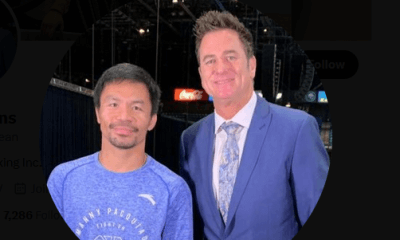
 Featured Articles2 weeks ago
Featured Articles2 weeks agoFrom the Boondocks to the Big Time, The Wild Saga of Manny Pacquiao’s Sidekick Sean Gibbons


